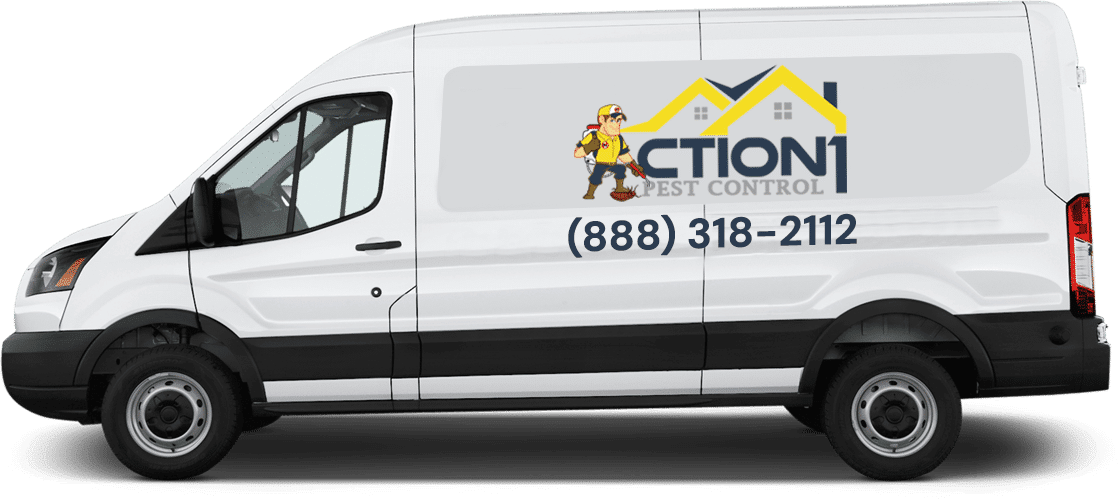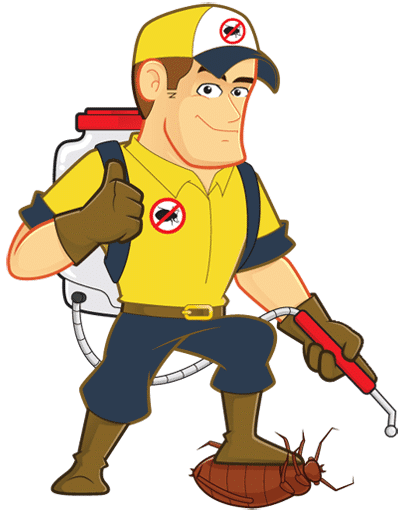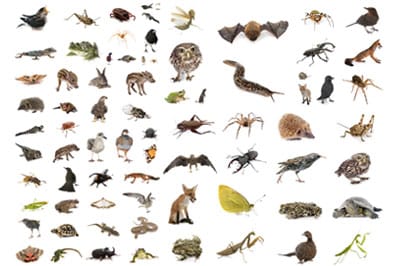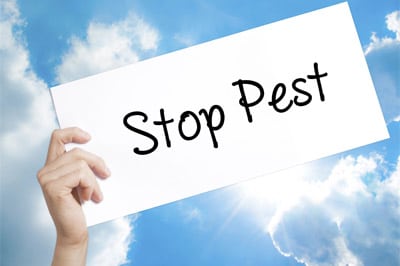Weed Control Services
Call Us Today- Home
- »
- Weed Control
Weeds compete with your garden plants for water, nutrients, sunlight, and space, making effective weed control essential for maintaining a healthy and productive landscape. Whether you’re dealing with annual invaders like crabgrass or persistent perennials with deep root systems, understanding the right approach can save you time, money, and frustration throughout the growing season.
The most successful weed control strategies combine multiple methods rather than relying on a single solution. We’ll explore how prevention through proper soil management and mulching can eliminate many weed problems before they start, while targeted physical removal and selective herbicide use can address existing issues.
From understanding why certain weeds thrive in your garden to implementing long-term management strategies that reduce your reliance on chemical treatments, we’ll help you with proven techniques that protect both your plants and the environment. The key lies in choosing the right combination of methods for your specific situation and applying them at the optimal times.
Highly Rated Weed Control Company

High Quality Services

Affordable & Upfront Pricing

Emergency Same Day Service
Understanding Weeds and Their Impact
Weeds compete directly with desirable plants for essential resources like water, nutrients, and sunlight, often outpacing cultivated species through aggressive growth patterns. Different weed types require specific control approaches, while their presence fundamentally alters soil conditions and weakens turfgrass systems.
Types of Weeds: Annual, Perennial, and Biennial
Annual weeds complete their entire life cycle within one growing season. These weeds germinate from seeds each spring, grow rapidly, produce seeds, and die before winter.
Common annual weeds include crabgrass, which thrives in thin turf areas, and various broadleaf species that emerge in garden beds. Annual weeds typically produce large quantities of seeds that remain viable in soil for years.
Perennial weeds live for multiple years and present the greatest control challenges. They establish extensive root systems that store energy reserves, allowing them to regrow even after top growth removal.
Dandelions exemplify perennial broadleaf weeds with deep taproots. Clover represents another persistent perennial that spreads through both seeds and creeping stems. These weeds often fragment when disturbed, creating new plants from root pieces.
Biennial weeds require two growing seasons to complete their life cycle. They form vegetative growth during the first year, then flower and produce seeds in the second year before dying.
Most biennial weeds develop rosette growth patterns in year one, making them difficult to distinguish from perennial species. We encounter fewer biennial weeds than annual or perennial types in typical lawn and garden settings.
Common Weeds in Gardens and Lawns
Grassy weeds closely resemble desirable turfgrass species, making identification challenging. Crabgrass represents the most problematic grassy weed, germinating when soil temperatures reach 55-60°F consistently.
Tall fescue becomes weedy when it appears as clumps in fine-textured lawns. Its coarse texture and rapid growth rate create unsightly patches that disrupt uniform turf appearance.
Broadleaf weeds display wide, flat leaves that contrast sharply with grass blades. Dandelions produce distinctive yellow flowers and deeply serrated leaves arranged in rosettes.
White clover forms low-growing patches with three-leaflet compound leaves and white flower heads. While some consider clover beneficial for nitrogen fixation, it creates texture inconsistencies in maintained lawns.
Weed identification requires examining leaf shape, growth habits, and flowering characteristics. Grassy weeds typically have parallel leaf veins, while broadleaf weeds show netted vein patterns.
We must identify weeds accurately before selecting control methods, as different species respond to different management approaches.
How Weeds Affect Soil and Turfgrass Health
Weeds compete aggressively for soil moisture, often developing more extensive root systems than turfgrass. Deep-rooted perennial weeds like dandelions access water reserves beyond the reach of shallow grass roots.
Nutrient competition occurs when weeds absorb essential elements faster than desired plants. Fast-growing annual weeds consume available nitrogen rapidly, leaving turfgrass deficient during critical growth periods.
Light competition becomes severe when tall weeds shade lower-growing turfgrass. Weeds often grow vertically faster than grass, intercepting sunlight needed for photosynthesis.
Soil compaction increases in areas where weeds dominate, as their root systems may not provide the same soil structure benefits as healthy turfgrass. Some weeds actually indicate existing soil problems like poor drainage or pH imbalances.
Turfgrass density decreases as weeds establish, creating a cycle of continued weed invasion. Thin turf provides ideal germination sites for weed seeds, while dense, healthy grass naturally suppresses weed establishment.
Allelopathy occurs when certain weeds release chemicals that inhibit turfgrass growth. These natural herbicides can persist in soil, continuing to affect desirable plants even after weed removal.
Our 5 Step Pest and Weed Control Process

Weed Prevention and Management Strategies
Effective weed prevention relies on creating conditions that favor desired plants while suppressing unwanted growth through strategic use of mulching materials, soil improvements, proper maintenance practices, and thoughtful planting decisions.
Mulching Techniques and Materials
We can significantly reduce weed pressure by applying appropriate mulch materials at the correct depth and timing. Organic mulches like wood chips, straw, and grass clippings provide dual benefits of weed suppression and soil improvement.
Wood chips work best around trees and shrubs, applied 2-4 inches deep while keeping material away from plant stems. Straw excels in vegetable gardens and annual beds, creating effective barriers when applied 3-4 inches thick.
Grass clippings decompose quickly and work well for temporary weed control between plantings. We avoid using clippings from lawns treated with herbicides within the past month.
Inorganic options include landscape fabric and cardboard for long-term suppression. Landscape fabric blocks light while allowing water penetration, making it ideal under decorative mulches. Cardboard provides temporary suppression and eventually decomposes into the soil.
Newspaper works similarly to cardboard but requires frequent replacement. We apply these materials before planting and secure them properly to prevent wind displacement.
Improving Soil Health and Organic Matter
Healthy soils with adequate organic matter support vigorous plant growth that naturally outcompetes weeds. We incorporate compost annually to improve soil structure and nutrient availability.
Compost additions of 1-2 inches per year increase organic matter content and promote beneficial microbial activity. This creates conditions that favor desirable plants over many common weeds.
Soil pH management plays a crucial role in weed control. We test soil pH annually and adjust as needed for optimal plant health. Most ornamental plants thrive in slightly acidic to neutral conditions (pH 6.0-7.0).
When soil pH falls outside optimal ranges, desired plants struggle while pH-tolerant weeds gain competitive advantages. We use lime to raise pH or sulfur to lower it based on soil test recommendations.
Regular organic matter additions through compost, aged manure, or leaf mold improve soil health over time. These amendments enhance water retention and nutrient availability for established plants.
Optimizing Mowing Height and Irrigation
Proper mowing height strengthens grass and reduces weed establishment in lawn areas. We maintain cool-season grasses at 2.5-3.5 inches and warm-season varieties at 1.5-2.5 inches.
Taller grass develops deeper root systems and shades soil surface, preventing weed seed germination. We never remove more than one-third of grass blade length in a single mowing session.
Strategic irrigation promotes deep root growth while minimizing conditions that favor weed germination. We water deeply but less frequently, applying 1-1.5 inches per week including rainfall.
Early morning watering reduces disease pressure and allows plants to dry before evening. We avoid frequent shallow watering that encourages shallow root systems and creates ideal conditions for annual weed germination.
Drip irrigation and soaker hoses deliver water directly to desired plants while keeping surrounding soil drier. This targeted approach reduces weed pressure in planting beds and garden rows.
Companion Planting and Plant Density
Dense plantings create natural weed suppression through competition for light, water, and nutrients. We space plants appropriately to achieve full coverage without overcrowding.
Ground cover plants provide living mulch that prevents weed establishment. We select species appropriate for specific site conditions and maintenance requirements.
Companion planting strategies utilize plants with different growth habits and resource needs to maximize space utilization. Tall plants provide shade for shorter species while deep-rooted plants access different soil layers than shallow-rooted companions.
We choose plant combinations that mature at different times to maintain continuous soil coverage. Spring bulbs paired with summer perennials ensure year-round weed suppression in many climates.
Proper plant density varies by species and intended effect. We follow spacing recommendations for individual plants while considering overall coverage goals and long-term growth patterns.
Physical and Cultural Weed Control Methods
Physical and cultural methods provide effective, chemical-free approaches to weed management through direct removal, environmental manipulation, and strategic ground coverage. These techniques range from manual extraction to creating physical barriers that prevent weed establishment.
Hand Pulling and Mechanical Removal
Hand pulling remains one of the most precise methods for targeted weed removal. We achieve best results when pulling weeds after rain or irrigation, as moist soil allows complete root extraction.
Timing is critical for successful hand pulling. Young weeds with shallow root systems require less effort and leave fewer root fragments behind. We should target weeds before they reach reproductive maturity to prevent seed production.
Mechanical tools enhance our efficiency significantly. Hoes work well for surface cultivation between crop rows. Hand weeders with forked ends help extract deep-rooted perennials more completely.
For larger areas, we can use flame weeding or cultivation equipment. Rotary hoes disturb small weeds effectively in row crops. Timing mechanical operations when weeds are in the white thread stage maximizes mortality rates.
Regular cultivation disrupts weed germination cycles. However, we must balance soil disturbance with erosion prevention and avoid damaging crop root systems.
Solarization and Sheet Mulching
Solarization uses solar energy to heat soil and kill weed seeds through controlled temperature elevation. We cover prepared soil with clear plastic sheeting during hot summer months, typically for 4-6 weeks.
Soil preparation enhances solarization effectiveness. We irrigate the area thoroughly before covering, as moist soil conducts heat better than dry soil. The plastic should remain tight against the soil surface.
Sheet mulching creates physical barriers using layered organic materials. We start with cardboard or newspaper as the base layer, which blocks existing vegetation and prevents light penetration.
Layering materials properly ensures success. We place 4-6 inches of wood chips, straw, or leaves over the cardboard base. This combination suppresses weeds while gradually decomposing to improve soil structure.
Newspaper works well for temporary suppression in annual gardens. We apply 6-8 sheet layers, overlapping edges by several inches to prevent weed breakthrough.
Using Barriers and Groundcovers
Physical barriers prevent weed establishment through light exclusion and root restriction. Landscape fabric provides long-term suppression in perennial plantings and pathways.
Installation technique determines barrier effectiveness. We secure edges properly and cut precise planting holes to prevent weed entry points. Quality materials resist degradation and root penetration.
Living groundcovers compete directly with weeds for space and resources. Dense, low-growing plants like clover establish quickly and outcompete many weed species through aggressive spreading.
Groundcover selection depends on site conditions and intended use. We choose species that match soil type, moisture levels, and light conditions. Established groundcovers require minimal maintenance once mature.
Organic mulches serve dual purposes as barriers and soil amendments. We apply 2-4 inch layers of wood chips, straw, or shredded leaves around plants. These materials suppress germination while conserving soil moisture.
Chemical Control Options and Safe Application
Chemical weed control involves using herbicides to kill target weeds or inhibit their growth. Proper herbicide selection requires understanding different types, application timing, and safety protocols to achieve effective results while minimizing environmental impact.
Types of Herbicides: Selective and Non-Selective
We classify herbicides into two main categories based on their target range. Selective herbicides kill specific plant types while leaving others unharmed.
For example, 2,4-D targets only broadleaf weeds and won’t damage grasses. This makes selective herbicides ideal when we need to preserve desirable plants while eliminating problem species.
Non-selective herbicides kill a wide range of plant species regardless of type. Acetic acid-based herbicides kill grasses, sedges, and broadleaf plants equally.
We use non-selective options when complete vegetation removal is the goal. These herbicides work well for clearing areas before planting or treating heavily infested zones.
The choice between selective and non-selective depends on our specific management goals. Selective herbicides offer precision control while non-selective options provide broad-spectrum elimination.
Pre-Emergent vs Post-Emergent Herbicides
Pre-emergent herbicides prevent weed seeds from germinating or kill seedlings as they emerge. We apply these before weeds become visible, typically in early spring or fall.
These herbicides create a chemical barrier in the soil surface. They work best when applied before weed seeds germinate and require proper timing for maximum effectiveness.
Post-emergent herbicides kill weeds that have already emerged and are actively growing. We apply these directly to visible weeds during their growing season.
Post-emergent options work faster since we can see immediate results. However, larger weeds become harder to control and may require higher application rates.
Annual weeds respond better to post-emergent treatment when they’re small seedlings. Conditions that favor rapid plant growth also increase herbicide effectiveness but may increase crop injury risk.
Best Practices for Herbicide Application
We must rotate herbicides with different active ingredients to prevent resistance development. Using the same chemical repeatedly leads to faster emergence of resistant weed populations.
Tank mixing multiple products saves time and money when done correctly. We need to verify chemical compatibility, proper mixing order, and appropriate water pH before combining products.
Adjuvants improve herbicide performance significantly:
- Surfactants help herbicides stick to plant surfaces
- Crop oil concentrates increase plant uptake
- Nitrogen fertilizers can boost herbicide activity
We should apply herbicides uniformly at correct rates. Incorrect application wastes chemical, reduces control effectiveness, and may damage desirable plants.
Weather conditions affect application success. We avoid spraying during windy conditions, extreme temperatures, or when rain is expected within the herbicide’s required dry time.
Environmental and Safety Considerations
Both organic and synthetic herbicides can be toxic to applicators and the environment when used incorrectly. We must follow all label instructions as the label is the law.
Personal protective equipment (PPE) is required when handling any herbicide. Each product label specifies the necessary protective gear for safe use.
We need an Oregon pesticide applicator license for buying, applying, or supervising restricted-use pesticides. This ensures proper training in safe application methods.
Proper storage prevents accidental exposure and environmental contamination. We store herbicides in original containers away from children, pets, and water sources.
Application timing affects environmental impact. We avoid treating areas near water bodies during sensitive periods and follow buffer zone requirements specified on labels.

Why Hire Our Team
Our professional weed control services provide comprehensive, long-term solutions that eliminate existing weeds while preventing future infestations through specialized knowledge, proper timing, and proven treatment methods. We understand the unique challenges each lawn faces and develop customized strategies that deliver lasting results.
Our expertise goes beyond basic weed removal to create healthier soil conditions and stronger grass growth that naturally resists weed invasions. The investment in professional services saves time, reduces frustration, and ultimately costs less than repeated DIY attempts that often fall short of expectations.
Expertise and Effective Results
We bring specialized knowledge that makes the difference between temporary fixes and lasting solutions. Our teams understand weed biology, growth patterns, and the most effective elimination methods for each species.
Professional weed identification ensures we target the right weeds with the right approach. Many homeowners struggle to distinguish between similar-looking weeds that require completely different treatment strategies.
We use commercial-grade herbicides not available to consumers. These products deliver superior results while maintaining safety standards for families and pets.
Our treatment timing maximizes effectiveness. We know when to apply pre-emergent herbicides before seeds germinate and when post-emergent treatments work best.
Customized treatment plans address your lawn’s specific needs. We assess soil conditions, grass type, and existing weed problems to create targeted solutions.
We stay current with the latest research and techniques. This ongoing education ensures we use the most advanced and effective methods available.
Time and Effort Savings
Weed control requires consistent monitoring and repeated applications throughout the growing season. We handle this ongoing commitment so you don’t have to.
Manual weed removal takes hours of back-breaking work. Our efficient methods eliminate weeds quickly across large areas.
We manage the entire process from assessment to application to follow-up treatments. This comprehensive approach removes the guesswork and trial-and-error that homeowners face.
Our scheduled treatments ensure consistent coverage during critical periods. Missing application windows often leads to weed breakthroughs that require starting over.
We bring all necessary equipment and products to each visit. This eliminates multiple trips to garden centers and storage of various chemicals.





